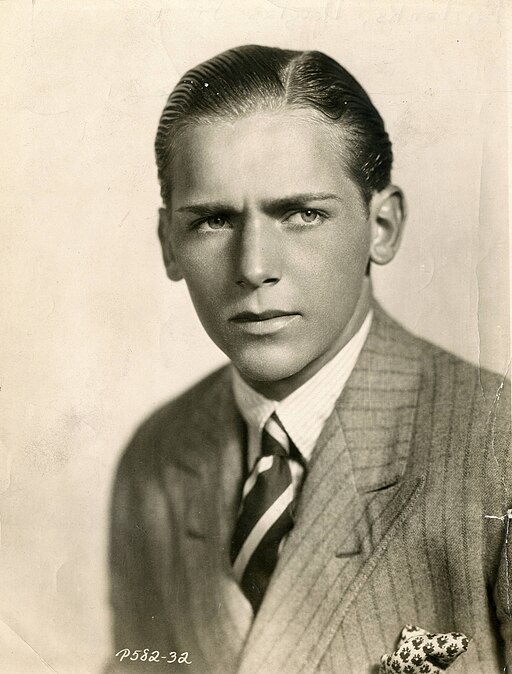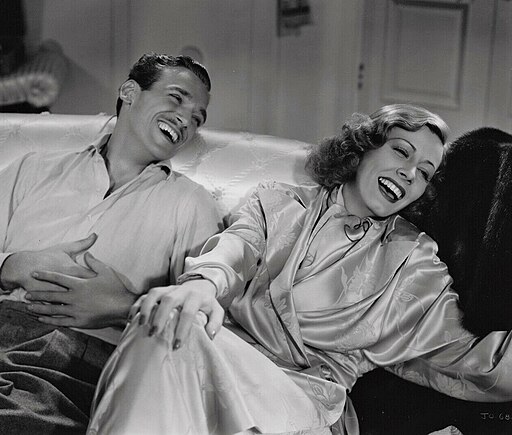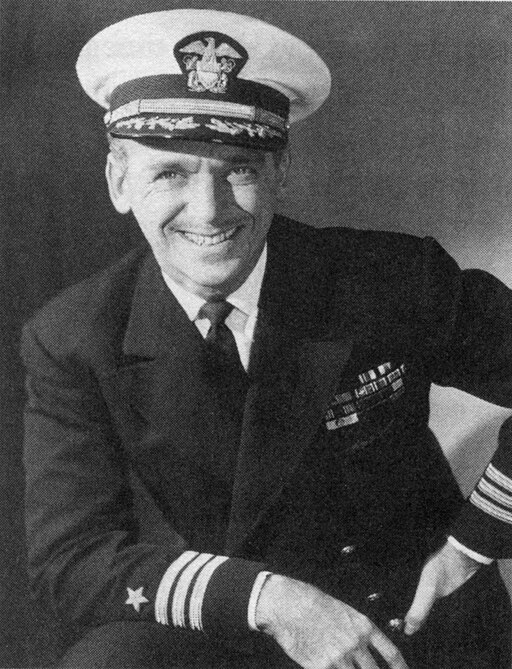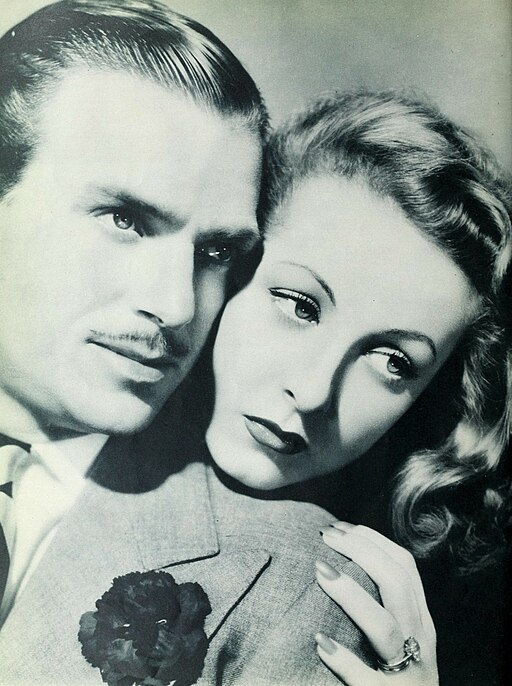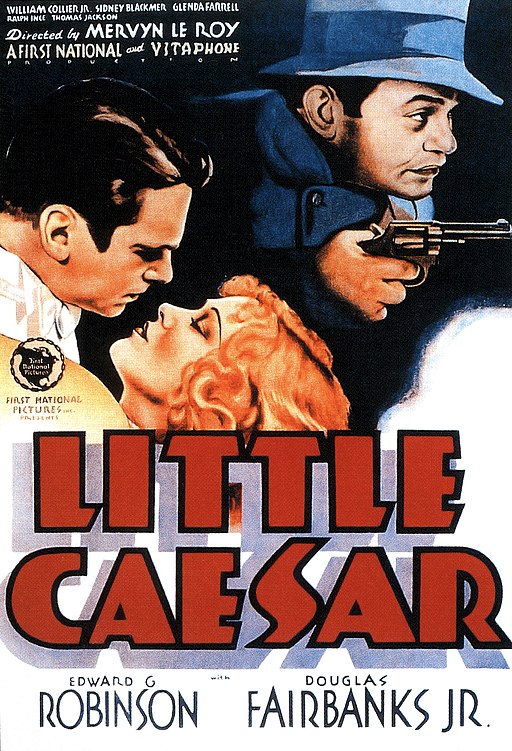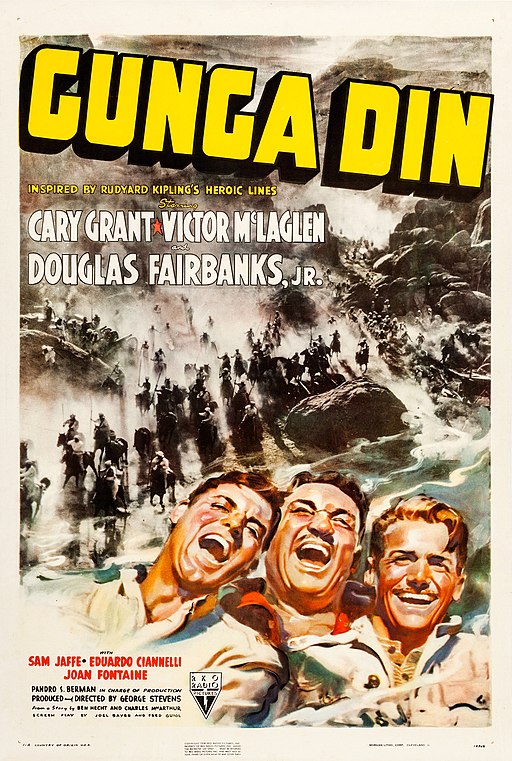Douglas Fairbanks Jr.
back| Full Name | Douglas Elton Fairbanks Jr. |
| Stage Name | Douglas Fairbanks Jr. |
| Born | December 9, 1909 |
| Birthplace | New York City, New York, USA |
| Died | May 7, 2000 |
| Buried | Hollywood Forever Cemetery, Hollywood, Los Angeles, California, USA |
| Married to | Joan Crawford (1929–1933) - Mary Lee Epling (Mary Lee Hartford) (1939–1987, her death) - Vera Shelton (1991 until his death in 2000) |
| Children | Daphne Fairbanks - Victoria Fairbanks - Melissa Fairbanks |
| Notable films | The Prisoner of Zenda (1937) - Little Caesar (1931) - Gunga Din (1939) - The Corsican Brothers (1941) |
Douglas Fairbanks Jr.
The Dashing Man of Hollywood’s Golden Age
Throughout his career, Douglas Fairbanks Jr. demonstrated a remarkable range of talent, appearing in over 100 movies. He was known for his dashing looks, charm, and the ability to perform his own stunts, which was a trait he shared with his father, Douglas Fairbanks Sr., a silent film icon.
Beyond his acting career, Fairbanks Jr. was a decorated naval officer who served with distinction during World War II, particularly in planning and executing operations in Sicily and France.
Related
Douglas Fairbanks Jr. (1909 – 2000)
Biography and Career Overview
Douglas Fairbanks Jr. was born into the luminance of early Hollywood, the son of Douglas Fairbanks Sr., one of the first megastars of the silent film era, and his first wife, Anna Beth Sully. Born on December 9, 1909, in New York City, he was destined to follow in the footsteps of his famed father, though he carved out his own unique path both on and off the screen.
Early Years and Path to Success
Growing up under the shadow of his father's illustrious career, Fairbanks Jr. was initially reluctant to enter the film industry, seeking to forge his own identity. However, the allure of Hollywood proved irresistible, and he made his film debut at the tender age of 13. His early roles were small, but his charm, good looks, and famous name helped him quickly ascend the ranks of Hollywood's elite. By the mid-1920s, he had established himself as a leading man, known for his roles in romantic and swashbuckling films.
Personal Life and Marriages
Fairbanks Jr.'s personal life was as eventful as his on-screen roles. He was married three times, first to the famed actress Joan Crawford in 1929. This high-profile marriage ended in divorce in 1933, a union that had been eagerly followed by the public and press alike. He found love again with Mary Lee Epling (later known as Mary Lee Hartford) in 1939, a marriage that lasted until her death in 1987 and produced three daughters: Daphne, Victoria, and Melissa. In 1991, he married Vera Shelton, who remained his partner until his death.
Passions and Interests
Beyond the silver screen, Fairbanks Jr. was a man of diverse interests and talents. He served with distinction in the United States Navy during World War II, where his efforts in intelligence and operations earned him numerous decorations, including the Silver Star and the Legion of Merit. His military service was a significant chapter in his life, reflecting his deep sense of duty and patriotism.
Fairbanks Jr. was also known for his elegance and style, becoming a fashion icon of his time. His interest in literature, art, and travel was well-documented, and he was a fixture in high society on both sides of the Atlantic. His charm and wit made him a beloved figure in the circles he frequented.
Death and Legacy
Douglas Fairbanks Jr. passed away on May 7, 2000, in New York City at the age of 90. The cause of death was a heart attack, following a period of ill health. He was buried in Hollywood Forever Cemetery, among the pantheon of Hollywood legends, including his father.
Fairbanks Jr.'s legacy is that of a renaissance man who transcended his Hollywood lineage to become a respected actor, a war hero, and a gentleman of the highest order. His contributions to the film industry and his service to his country are remembered with admiration and respect. His life story, from the bright lights of Hollywood to the battlefields of World War II, and back again, is a testament to a man who lived with vigor, grace, and a deep commitment to his many passions.
Interview with Douglas Fairbanks Jr.:
Fairbanks’ Three Daughters:
Douglas Fairbanks Jr. had three daughters from his marriage to Mary Lee Epling (who became Mary Lee Hartford after their marriage), his second wife. His daughters are:
- Daphne Fairbanks: Born in the early 1940s, Daphne is the eldest of Fairbanks Jr.'s children. Like many children of Hollywood royalty, she grew up in the spotlight but managed to carve out her own path away from the film industry. Details about her personal life and career are not widely publicized, reflecting a preference for privacy that many family members of celebrities choose to maintain.
- Victoria Fairbanks: Victoria, his second daughter, has similarly maintained a low profile in public life. While the Fairbanks family has been involved in various philanthropic efforts and the arts, specific information about Victoria's personal achievements, career, or interests is not extensively documented in public sources.
- Melissa Fairbanks: The youngest of the trio, Melissa has also kept a relatively private life. Like her sisters, specific details about her career or personal endeavors are not widely known to the public.
The Fairbanks daughters have lived their lives largely out of the public eye, especially when compared to the generations of their family before them.
Analysis of Douglas Fairbanks’ Jr. Acting Style:
Douglas Fairbanks Jr.'s acting style was emblematic of Hollywood's golden era, blending charm, elegance, and athleticism, which allowed him to navigate a wide range of roles from swashbuckling heroes to sophisticated gentlemen. His style was inherently linked to the theatricality of early cinema, yet he infused it with a naturalism that was ahead of his time, a testament to his versatility and understanding of the craft.
Charm and Charisma
Fairbanks Jr. inherited the magnetic screen presence of his father, Douglas Fairbanks Sr., one of silent cinema's greatest stars. Yet, he was no mere echo of his father; he crafted an on-screen persona that was suave, debonair, and effortlessly charming. This natural charisma allowed him to excel in roles that required a sophisticated demeanor, making him particularly effective in romantic and comedic parts.
Athleticism and Swashbuckling Flair
Like his father, Fairbanks Jr. possessed an athletic prowess that lent credibility and excitement to his action roles. He was adept at performing his own stunts, which added a layer of authenticity to the swashbuckling characters he portrayed. This physicality, combined with his charismatic screen presence, made him a natural successor to the legacy of cinematic adventurers established by his father. His performances in films like "The Prisoner of Zenda" and "Gunga Din" showcased his ability to blend action with a certain aristocratic flair, a hallmark of his acting style.
Elegance and Sophistication
Fairbanks Jr. was the epitome of Hollywood elegance, known for his impeccable fashion sense both on and off the screen. This sophistication transcended his physical appearance, permeating his acting style. He had a way of delivering lines with a polished cadence and a twinkle in his eye that conveyed a deep understanding of his characters, often adding layers of irony or humor without diminishing the character's believability.
Emotional Range and Depth
Despite being best known for his adventurous and romantic roles, Fairbanks Jr. demonstrated a significant emotional range when the opportunity arose. In dramas like "The Dawn Patrol," he effectively conveyed the psychological torment of his character, showcasing his ability to tackle more complex emotional landscapes. This depth added a nuanced dimension to his performances, revealing an actor capable of much more than his public persona might suggest.
Legacy and Influence
Fairbanks Jr.'s acting style was a bridge between the silent film era's grandiosity and the more nuanced performances that became prevalent with the advent of sound. He managed to maintain a sense of classical Hollywood glamour while also embracing the evolving demands of film acting, making him a significant figure in the transition period of American cinema.
Significance of his Performance in “Little Caesar”:
Douglas Fairbanks Jr.'s role in "Little Caesar" (1931) marked a significant moment in his career, emphasizing his versatility as an actor and his ability to stand out even in supporting roles alongside formidable leads. "Little Caesar" is recognized as one of the pioneering films of the gangster genre in American cinema, directed by Mervyn LeRoy and starring Edward G. Robinson in his iconic role as the titular gangster, Rico Bandello.
Transition from Romantic and Adventure Roles
Prior to "Little Caesar," Fairbanks Jr. was mostly known for his roles in romantic and adventure films, showcasing his charm and good looks. His involvement in "Little Caesar" allowed him to demonstrate a broader range, playing the role of Joe Massara, a dancer who becomes entangled in Rico's criminal activities. This role offered Fairbanks Jr. an opportunity to step away from the swashbuckling image associated with his father and to establish himself as a versatile actor capable of handling complex characters in gritty, contemporary stories.
Contribution to the Gangster Genre
"Little Caesar" is credited with setting the template for the gangster film genre, focusing on the rise and fall of a criminal anti-hero. Fairbanks Jr.'s performance contributed to the film's success and its enduring legacy in American cinema. By participating in a landmark film that helped define a new genre, Fairbanks Jr. expanded his artistic repertoire and aligned himself with a new, emerging trend in Hollywood storytelling.
Impact on Fairbanks Jr.'s Career
The success of "Little Caesar" had a lasting impact on Douglas Fairbanks Jr.'s career, showcasing his ability to navigate the transition from silent films to "talkies" successfully. It opened doors for him to explore a variety of roles beyond the traditional leading man persona and to work with some of the most talented directors and actors of his time. While he would continue to play in adventure and romantic films, his performance in "Little Caesar" underscored his capacity for more nuanced and dramatically challenging roles.
Recognition
Though "Little Caesar" is often remembered primarily for Edward G. Robinson's groundbreaking performance, Fairbanks Jr.'s role in the film remains a notable part of his filmography. It represents his early efforts to diversify his roles and to seek out projects that challenged him as an actor. This willingness to explore the darker and more complex sides of human nature would characterize many of his later performances, contributing to his reputation as a dynamic and adaptable actor in Hollywood's golden age.
Awards and Recognition:
Douglas Fairbanks Jr., despite his significant contributions to the film industry and his notable career, did not amass a long list of awards and nominations in the way contemporary actors might. His era was one in which fewer awards existed, and the industry's focus was less on accolades and more on the work itself. However, his legacy and contributions were recognized in various ways throughout his life and posthumously.
Awards and Honors
- Stars on the Hollywood Walk of Fame: Fairbanks was awarded two stars on the Hollywood Walk of Fame, one for his contributions to the motion picture industry (at 6318 Hollywood Boulevard) and another for television (at 6665 Hollywood Boulevard). This dual recognition underscores his impact on both cinema and television.
- British Honours: In 1949, Fairbanks was made an Honorary Knight Commander of the Order of the British Empire (KBE) by King George VI for his service during World War II, particularly for his efforts in fostering Anglo-American relations. This is a significant honor, reflecting not just his contributions to entertainment but also his work off-screen.
- Navy Decorations: While not a film industry award, it's worth noting Fairbanks's military decorations for his service during World War II. He received the United States Navy's Legion of Merit and the Silver Star, among other commendations, acknowledging his bravery and contributions during the war.
Posthumous Recognitions
After his passing, Fairbanks continued to be celebrated for his lasting impact on the film industry and his philanthropic efforts. Various film festivals, retrospectives, and institutions have honored him and his legacy, highlighting his role in Hollywood's golden era and his contributions to American culture.
Notable Movies starring Douglas Fairbanks Jr.:
1920s to 1930s: Rising Star
- "Stella Dallas" (1925): A young Fairbanks Jr. had a minor role in this drama about a woman who sacrifices everything for her daughter's happiness.
- "Outward Bound" (1930): Fairbanks plays Henry, a passenger on a mysterious ship ferrying souls to the afterlife, reflecting on his life and love.
- "The Dawn Patrol" (1930): He stars as a World War I flying ace dealing with the pressures of command and the loss of fellow pilots.
1930s: Established Leading Man
- "Little Caesar" (1931): While not a starring role, Fairbanks appears in this seminal gangster film that helped define the genre.
- "Morning Glory" (1933): A drama about the rise of an aspiring actress, featuring Fairbanks in a supporting role as a playwright.
- "The Prisoner of Zenda" (1937): Fairbanks Jr. shines as Rupert of Hentzau in this adventure film about mistaken identity and royal intrigue.
- "Gunga Din" (1939): Set in colonial India, Fairbanks stars alongside Cary Grant and Victor McLaglen in a tale of adventure and heroism based on Rudyard Kipling’s poem.
1940s: Swashbuckler and Adventurer
- "The Corsican Brothers" (1941): Playing dual roles as separated-at-birth twins with a psychic bond, Fairbanks explores themes of revenge and brotherhood in this adaptation of Dumas' novel.
- "Sinbad the Sailor" (1947): As the legendary sailor, Fairbanks embarks on a quest for hidden treasure, encountering dangers and romance.
1950s Onwards: Transitioning Roles
- "The Fighting O'Flynn" (1949): Fairbanks Jr. not only starred in but also produced this film, playing an Irish patriot who fights against English oppression.
- "State Secret" (1950): In one of his later leading roles, Fairbanks plays a doctor caught up in political intrigue in a fictional Eastern European country.

